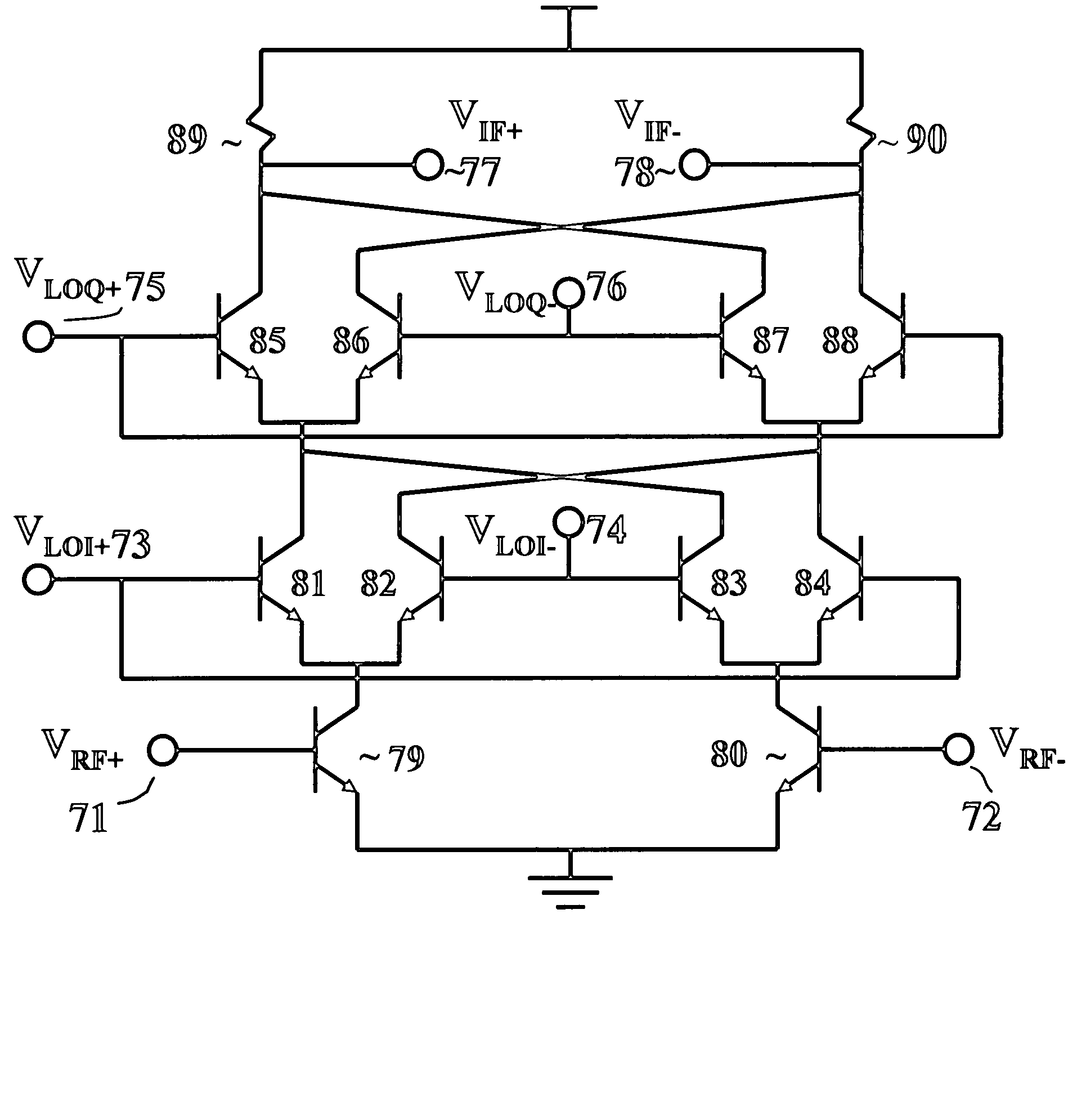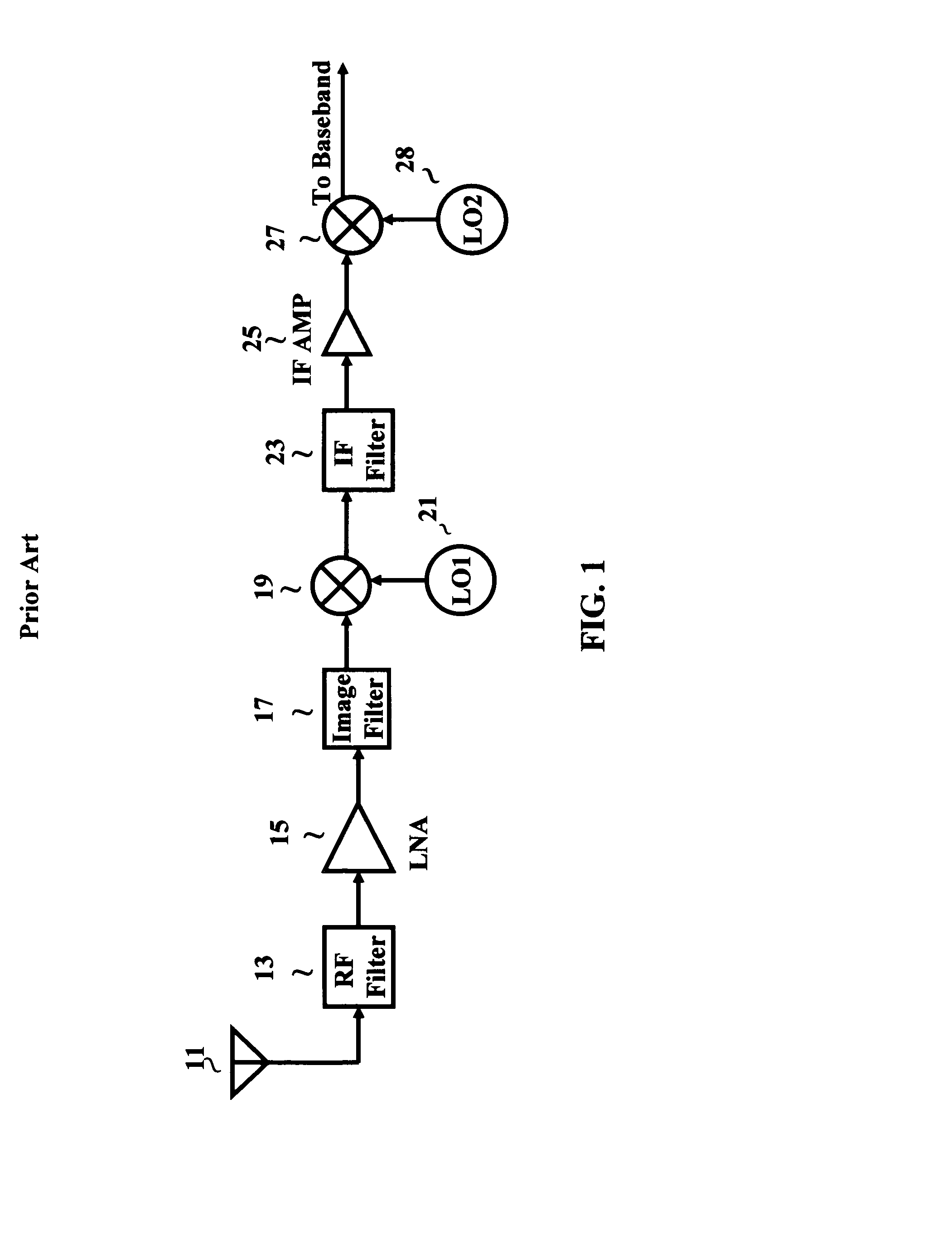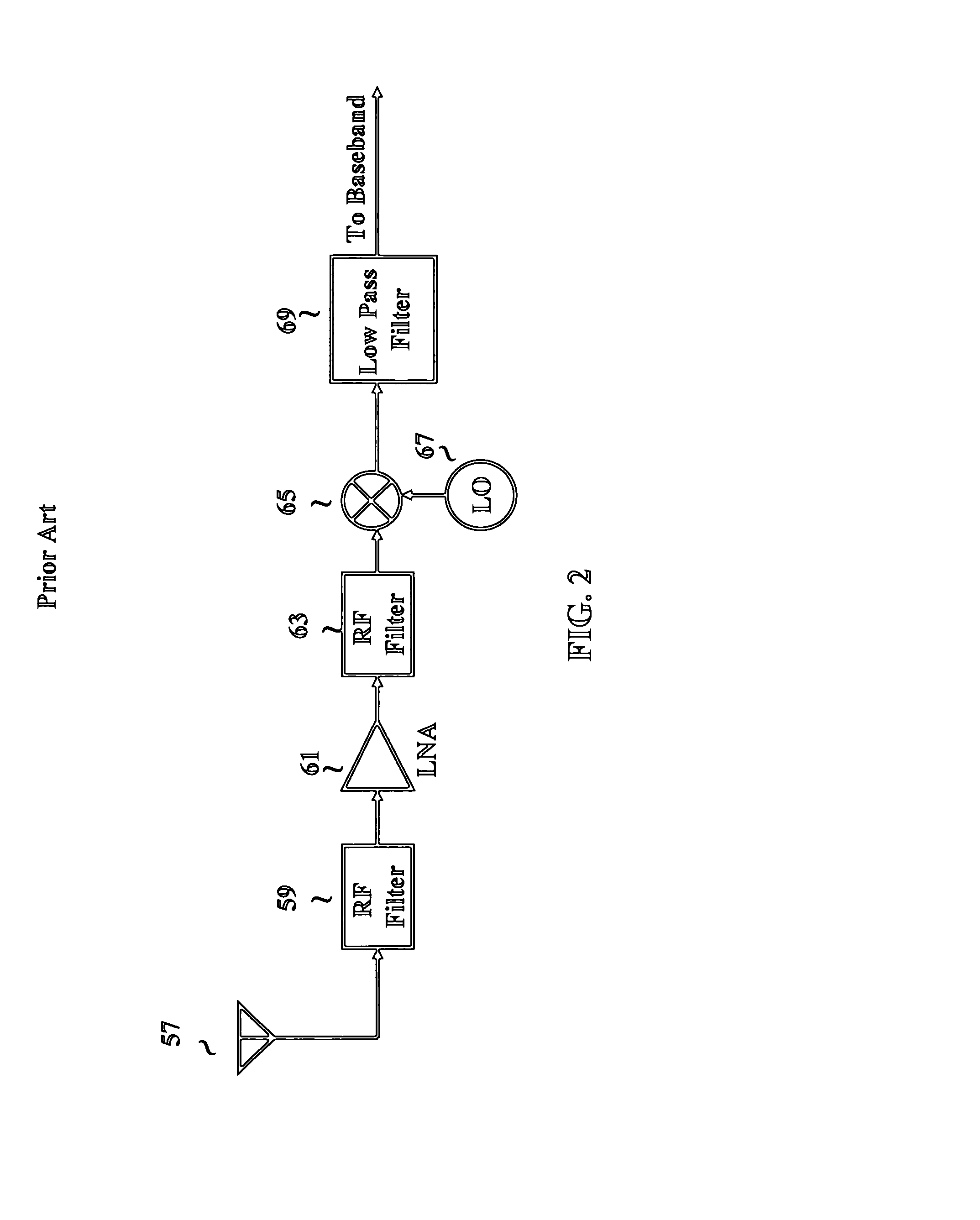Passive subharmonic mixer design
a subharmonic mixer and subharmonic technology, applied in the field of radio receivers, can solve the problems of large power consumption and general complexity of the superheterodyne receiver, the direct conversion design, and the problem of large power consumption to maintain linear operation, etc., to achieve the effect of reducing local oscillator radiation, low supply voltage and low power dissipation
- Summary
- Abstract
- Description
- Claims
- Application Information
AI Technical Summary
Benefits of technology
Problems solved by technology
Method used
Image
Examples
Embodiment Construction
[0022]FIG. 4 is a block diagram of a passive mixer known as prior art [3]. It consists of RF inputs, 101 and 102, that are connect to four MOS switches, 107-110, with gates driven by the local oscillator positive and negative differential phases, 103 and 104. The load capacitor 111 is used to filter the high frequency noise of the system. The local oscillator signal, 103 and 104, inverts the phase of the RF input, 101 and 102, on every half cycle, thus producing the mixing function between the RF input and the local oscillator input. Because the switches are passive components and do not dissipate power, the passive mixer has advantages compared to an active mixer with reduce power and improved linearity.
[0023]FIG. 5 is a schematic of a passive subharmonic mixer constructed in accordance with the principles of the present invention. This embodiment is for a local oscillator running at one half the mixing frequency, and thus requires differential in-phase 123 and 124 and quadrature-p...
PUM
 Login to View More
Login to View More Abstract
Description
Claims
Application Information
 Login to View More
Login to View More - R&D
- Intellectual Property
- Life Sciences
- Materials
- Tech Scout
- Unparalleled Data Quality
- Higher Quality Content
- 60% Fewer Hallucinations
Browse by: Latest US Patents, China's latest patents, Technical Efficacy Thesaurus, Application Domain, Technology Topic, Popular Technical Reports.
© 2025 PatSnap. All rights reserved.Legal|Privacy policy|Modern Slavery Act Transparency Statement|Sitemap|About US| Contact US: help@patsnap.com



